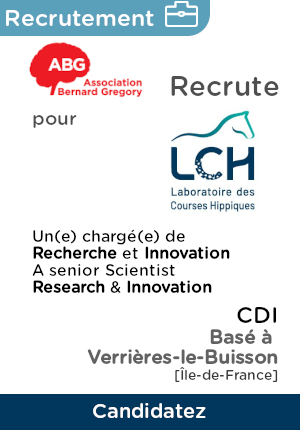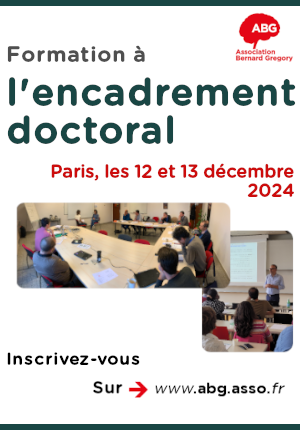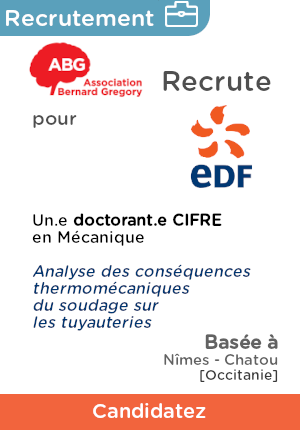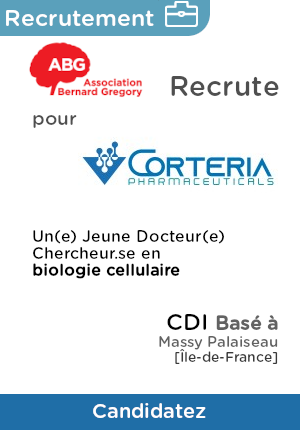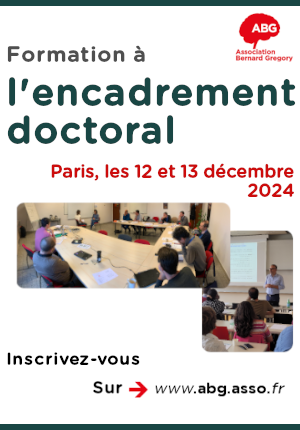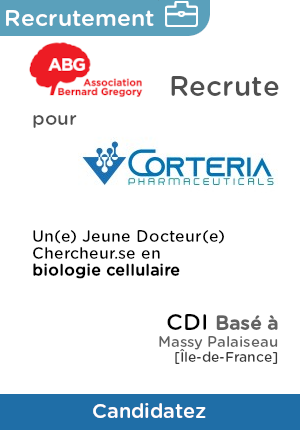Post-Doctoral Fellowship in optical instrumentation monitoring organic bioelectronics devices
| ABG-125020 | Job | Any |
| 2024-07-19 | Fixed-term 24 Month | > €35,000 and < €45,000 annual gross |
- Electronics
- Materials science
Employer
Mines Saint-Etienne is a graduate engineering school of the Institut Mines-Télécom (IMT), the leading public group of engineering and management schools in France. IMT is an EPSCP (large establishment) under the supervision of the Ministry of the Economy, Finance and Industrial and Digital Sovereignty.
The École Nationale Supérieure des Mines de Saint-Étienne (Mines Saint-Etienne) is responsible for training, research and innovation, transfer to industry and scientific, technical and industrial culture.
Mines Saint-Etienne represents: 2,400 engineering students and researchers in training, 480 staff (150 researchers and teacher-researchers), a consolidated budget of €46 million, 3 campuses dedicated i) to industry in Saint-Etienne and Lyon (AURA region), ii) to microelectronics and connected objects in Gardanne (Aix-Marseille Provence area, PACA region) and iii) to engineering for health in Saint-Etienne; 6 research units; 5 training and research centers; a leading technical and industrial scientific culture center in France “La Rotonde” (> 50,000 visitors / year).
The Provence Microelectronics Center (CMP) is located in Gardanne (in Bouches-du-Rhône, 13). It is one of Mines Saint-Etienne’s five training and research centers. It includes four research departments including the Flexible Electronics department (FEL) within which the PostDoctoral Fellowship (PDF) is opened. Since 2005, the FEL department has been interested in activities relating to hybrid electronic systems. Most of the work is carried out around communicating electronic systems made on flexible substrates. At the technological level, research is carried out in the School's clean room in partnership with the Micropacks and IDFab technological platforms. The areas of application affect all sectors of society, in connection with sensor networks (medical patches for patient monitoring, abandoned sensors for the environment,…), advanced human-machine interfaces, etc.
The PDF position is located in an Excellence and collaborative environment, in the Centre de Microélectronique de Provence (CMP) (880, avenue de Mimet, Gardanne 13120, France). CMP belongs to the IMT – Mines Saint-Etienne Graduate Engineering School. The applicant will evolve in the Flexible Electronics Department of CMP.
All the organic neuromorphic devices will be designed, fabricated, first-proof demonstrated and characterized in the 650 m2 State-of-the-Art cleanroom of CMP. The applicant will have a full and free access to complete his.her scientific purposes.
The candidate will evolve in the multidisciplinary project, engaging 8 partners from 6 countries covering the academic and industrial worlds (including 1 SME).
Position and assignments
Ultra-flexible, conformable and implantable artificial intelligence organic electronic devices hold promise to revolutionize the real-time monitoring and treatment of chronic diseases. Such devices could be based on organic electrochemical transistors (OECTs) exploiting polymeric mixed ion-to-electron conductors (PMIECs) as active layers. Indeed, PMIECs have emerged as an excellent materials platform to interface biology with conventional electronics; identified as the “organic or plastic bioelectronics” field [1,2]. The Organic ElectroChemical Transistor (OECT) is considered as one of the key building-block to operate such a transduction [3]. Its efficiency is evaluated following some Figures of Merits (FoMs): i) the transconductance (gm), ii) the switching times (tionic vs. telectronic), iii) an in-situ imaging of the dedoping propagating front (e.g. ionic mobility measurement), iv) the electrochemical impedance to establish the electrical equivalent circuit and extract capacitance. Mastering hierarchical self-organization and choosing the most favorable morphology in PMIECs are of paramount importance to improve the OECTs transduction operation. Beyond transducing application, in more long envision term, OECT is attractive to make emerging neuromorphics or bioelectronics circuit applications. Simple inverters were demonstrated in a CMOS-like configuration. It gives promising basis to investigate advanced circuits.
Our current understanding shows that swelling (or ionic penetration) properties of such (macro)molecular PMIECs are vital to properly drive OECTs. Indeed, the swelling of the hydrophilic (thus ionic) rich-phases authorizes the ions to penetrate and to move in vicinity of the hydrophobic pi-conjugated rich phases, modulating their doping states and thus the amount of electronic current flowing in the channel of OECTs. Consequently, the total surface that ionic & p-conjugated phases exchange in between and their self-organization play pivotal roles since such a transduction takes place in all the volume of the channel layer of an OECT.
In such a scientific context, the postdoctoral fellow (PDF) will develop a new optical and electro-optical instrumentation which will allow us to record PMIEC’s ionic mobility by analyzing the front (de)doping mechanisms [4]. In particular, as first objective, the PDF will develop the control and synchronization by computer (Python programming environment) of several spectroscopic, optoelectronics and electrical equipments to automatically extract key physical-chemical parameters of PMIECs. By combining spectroscopic data between ICONIC project partners, these investigations will contribute to establishing the engineering rules and optimal structure-property relationships of PMIECs that will optimize the OECT transduction operation. Last but not the least, the PDF will have support to fabricate OECTs in cleanroom, to monitor & analyze its key FoMs through the original developed instrumentation.
[1]. Someya, T., Bao, Z. & Malliaras, G. G. The rise of plastic bioelectronics. Nature 540, 379–385 (2016).
[2]. M. Berggren, A. Richter‐Dahlfors, Organic Bioelectronics. Advanced Materials 19, 3201–3213 (2007).
[3]. J. Rivnay, S. Inal, A. Salleo, R. M. Owens, M. Berggren & G. G. Malliaras, Organic electrochemical transistors. Nature Reviews Materials 3, 1–14 (2018).
[4]. E. Stavrinidou, P. Leleux, H. Rajaona, D. Khodagholy, J. Rivnay, M. Lindau, S. Sanaur, G. G. Malliaras, Direct Measurement of Ion Mobility in a Conducting Polymer. Advanced Materials 25 (32), 4488-4493 (2013).
Geographic mobility:
Telework
Starting date
Profile
The candidate should preferably hold (or be about to earn) a PhD degree in Instrumentation & Optical Spectroscopies, Materials Science or Electrical Engineering. i) A previous experience in the development of instrumentation to analyze (opto)(bio)electronic devices, ii) a demonstrated ability to perform independent work, iii) an excellent communication and writing (English) skills are equally important criteria with respect to academic qualifications and scientific merit for the selection of the candidate. The candidate should aim i) to work in a collaborative context and ii) to propose scientific investigations that are at the interface between Physics of Electronic Devices and Materials Science. Knowledges or past experiences in Organic (Bio)Electronics are advantageously considered.
Goals
In such a scientific context, the postdoctoral fellow (PDF) will develop a new optical and electro-optical instrumentation which will allow us to record PMIEC’s ionic mobility by analyzing the front (de)doping mechanisms [4]. In particular, as first objective, the PDF will develop the control and synchronization by computer (Python programming environment) of several spectroscopic, optoelectronics and electrical equipments to automatically extract key physical-chemical parameters of PMIECs. By combining spectroscopic data between ICONIC project partners, these investigations will contribute to establishing the engineering rules and optimal structure-property relationships of PMIECs that will optimize the OECT transduction operation. Last but not the least, the PDF will have support to fabricate OECTs in cleanroom, to monitor & analyze its key FoMs through the original developed instrumentation.
Vous avez déjà un compte ?
Nouvel utilisateur ?
Get ABG’s monthly newsletters including news, job offers, grants & fellowships and a selection of relevant events…
Discover our members
 CESI
CESI  CASDEN
CASDEN  Institut de Radioprotection et de Sureté Nucléaire - IRSN - Siège
Institut de Radioprotection et de Sureté Nucléaire - IRSN - Siège  ANRT
ANRT  ONERA - The French Aerospace Lab
ONERA - The French Aerospace Lab  Généthon
Généthon  Groupe AFNOR - Association française de normalisation
Groupe AFNOR - Association française de normalisation  Institut Sup'biotech de Paris
Institut Sup'biotech de Paris  Aérocentre, Pôle d'excellence régional
Aérocentre, Pôle d'excellence régional  Ifremer
Ifremer  PhDOOC
PhDOOC  Laboratoire National de Métrologie et d'Essais - LNE
Laboratoire National de Métrologie et d'Essais - LNE  ADEME
ADEME  TotalEnergies
TotalEnergies  MabDesign
MabDesign  Nokia Bell Labs France
Nokia Bell Labs France  SUEZ
SUEZ  Tecknowmetrix
Tecknowmetrix  MabDesign
MabDesign
-
JobPermanentRef. ABG124941Corteria Pharmaceuticals- Ile-de-France - France

Jeune Docteur, Chercheur en Biologie Cellulaire & Moléculaire (H/F)
BiologyAny -
JobFixed-termRef. ABG125071KTH- Sweden
ERC-funded postdoc position on the detection of gas-phase organic radicals, KTH, Stockholm, Sweden
Chemistry - Physics - Engineering sciencesAny -
JobPermanentRef. ABG123642Laboratoire des Courses Hippiques (GIE LCH)- Ile-de-France - France

Chargé(e) de Recherche et Innovation (H/F) / Senior Scientist Research & Innovation (M/F)
Chemistry - BiochemistryConfirmed

